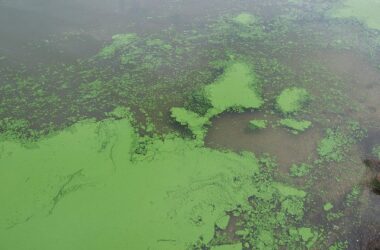Two questions stood out for our first column. First, “Why is the sky blue?” This is a well-known one, but the subject has also been tackled by just about every scientific blog and answer column under the blue sky. The second attention-grabbing question was “Why isn’t the sky blue?” That query raises a very important point that our familiarity with the first topic can cause us to gloss over––particularly, that the sky isn’t always blue.
The sky above our heads is one of the most striking and varied displays of nature. Sailors can extract volumes of information from the appearance of the sky at any given time. All kinds of fascinating atmospheric phenomena can affect the colours of the firmament, from sunrise and sunset to the eruption of a massive volcano.
The sky is often blue because light can get scattered when it passes through fluids, especially in the case of the earth’s atmosphere. By and large, there are two kinds of scattering that affect the sky’s coloration. Rayleigh scattering—the scattering of light by particles that are much smaller than the wavelength of light—and Mie scattering—when they’re scattered by particles larger than the wavelength—influence the colour. Scattering makes the light diverge from its path, which is why the sky is lit up at all. Without scattering, the sky would look like it does from the Moon or Mars, with bright light coming from the sun, but the rest of the sky looking as black as night. Light with shorter wavelengths, like blue, gets scattered more efficiently, which is why the daytime sky is blue. When light passes through more air and gets scattered, such as during sunrise and sunset, then the sky lights up in oranges and reds. These colours are all a result of Rayleigh scattering. Mie scattering happens with bigger particles than air, like dust and water droplets, which is why clouds and foggy days look greyish.
In 1883, Krakatoa, a volcanic island between Java and Sumatra, exploded in what was the largest eruption in recorded history. The effects of the eruption were devastating, with massive waves and earthquakes killing thousands and the island itself being mostly destroyed. However, some of the spookiest effects involved the sky.
Have you seen Edvard Munch’s painting The Scream? It looks pretty striking—which it should, because it’s expressionistic and doesn’t have to represent the world as it is—but there’s also another reason the sky looks the way it does, roiling rivers of blood and fire as if written in ghostly hues. According to researchers at the American Physical Society and an entry in Munch’s own journal, Munch based his colour palette on the very real colours of the sky around 1883 and 1884. By then, the eruption of Krakatoa had caused dramatic changes in sky colour all over the world, from South America to Munch’s native Norway. In New York, fire departments chased after phantom conflagrations that loomed as if an occult hand had set the horizon itself alight; in England, Lord Tennyson recorded “many a blood-red eve.”
The eerie colours were a result of volcanic ash in the atmosphere. In fact, the particles of ash, which quickly spread around the world, were about one micrometre large, which happens to be ideal for scattering red light. This caused sunrises and sunsets to become spectacular displays of scarlet and crimson. While other times, in direct light, red became scattered out altogether, causing blue or even green moons for almost a year.
Satisfied with the Scientist’s answer? Ask us more at [email protected]









